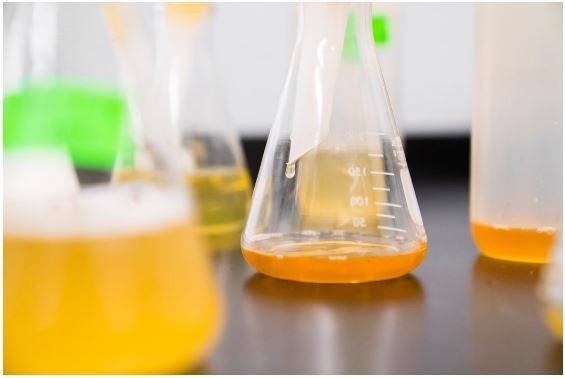
Image Credit: Thermo Fisher Scientific – Environmental and Process Monitoring Instruments
Pharmaceutical manufacturing is a strictly regulated, process-driven industry. A mistake in manufacturing can be costly in the best-case scenario and at worst, it can be life-threatening, particularly if a product has reached consumers.
The industry must adhere to numerous guidelines that are laid out by the Food & Drug Administration (FDA), for example, the Current Good Manufacturing Practices (cGMP). Product quality is at the center of cGMP, which assures the correct monitoring, design, and control of manufacturing facilities and processes.
cGMP also supplies guidance for how to attain quality raw materials, in addition to the preferred management processes and systems for maintaining optimum laboratory testing procedures. All factors play a key part in the effectiveness and safety of pharmaceutical products.
For manufacturers, adherence to cGMP is a necessity, and while quality and safety are top priorities in the pharmaceutical industry, these guidelines do introduce more challenges in the manufacturing process.
Accelerating Processes and Outputs Without Compromise
As even the smallest contaminant can offset results massively, and the wide range of active pharmaceutical ingredients (APIs) utilized to mean that the verification of raw materials is one of the most vital steps of the production process.
In order to verify materials, samples are usually sent to labs outside the manufacturing floor to a team of highly trained professionals for examinations. While this is a verification process that is highly accurate, it is prone to bottlenecks and frequently halts production.
When regulations called for the sampling of a statistical number of containers for a delivered material (sqrt n+1), this was challenging, but now the industry is moving towards verification of every container of a delivered material (100 percent material verification).
Although 100 percent material verification is a trusted method used to strengthen production safety, it is vital to consider that, depending on the size of the delivery, this requirement means facilities will be required to verify one drum or 1,000 drums per day.
The collection of batches to test will become more and more labor-intensive and time-consuming, which will enhance the bottleneck issue.
There is another obstacle further down the production line. Solvent drying is the partial or total removal of a solvent or solvents from an intermediate or API. This process can happen in numerous process vessels, including tray dryers, vacuum dryers, and rotary dryers.
Historically, the success of solvent drying could only be tested when the process had finished, which again required samples to be sent to a different lab for testing. The product had to re-enter the drying process if a test failed, resulting in lagging production times and the possibility of over-drying the solvent, leading to the loss of a batch.
It is no longer viable to assign the testing of drying samples and raw materials to separate laboratories due to the huge amount of test batches. Pharmaceutical manufacturers are seeking out new tools that are able to speed up the verification process without compromising the accuracy of results.
Technologies Rising to the Challenge
Currently, technological advancements are being developed to bring the power and accuracy of the lab to the manufacturing floor. For instance, new spectroscopy technology is removing the requirement for wet chemistry testing, enabling raw material ID and other analyses to happen on the warehouse floor instead of a lab.
Those in charge of receiving shipments and handling the inventory of raw materials can test a sample quickly by utilizing a portable, user-friendly device to verify materials like ionic salts such as potassium chloride and sodium chloride, which are utilized extensively in injectables, buffers, and biologics.
Further to speeding up raw material verification, by analyzing the material in its original packaging, these tools also lower the risk of cross-contamination and eliminate the requirement to transport the materials through numerous locations.
At a different part of the production line, process mass spectrometers are able to measure individual solvent concentrations in multiple dryer vents accurately to monitor the drying process.
Manufacturers are able to make adjustments to heating and temperature durations quickly by having a more advanced understanding of the emissions from APIs on the drying tray.
Process mass spectrometers mitigate the risk of lost product due to over-drying and when utilized appropriately, they can also speed up the production process while limiting the dependence on time-consuming offline testing such as Loss on Drying (LOD). This online technique increases batch-to-batch quality, minimizes interruptions to the process, and decreases drying times.
Accelerating Innovation Through Simplification
Technological advancement makes the pharmaceutical industry more productive and safer, as with the majority of other industries. Manufacturers can accelerate production times and innovation with simplified testing and analysis by minimizing the reliance on lab testing and assigning their highly technical staff towards R&D.
Further to these benefits, the time of factory floor workers can be better utilized while staying compliant with cGMP and other regulations.
Acknowledgments
Produced from materials originally authored by O. Dean Stuart and Daniel Merriman from Thermo Fisher Scientific

This information has been sourced, reviewed and adapted from materials provided by Thermo Fisher Scientific – Environmental and Process Monitoring Instruments.
For more information on this source, please visit Thermo Fisher Scientific – Environmental and Process Monitoring Instruments.